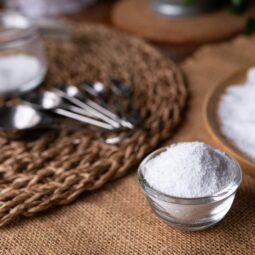By Albert Khine, MD, gastroenterology

“Let food be thy medicine” — the advice dates all the way back to Ancient Greece, and it still holds up. Today, we know that one sure way to improve both our physical and mental health is to improve our diets. And one of the simplest ways to do that is to eat more fiber.
You might think you get plenty of fiber already, but studies show that only about 7% of us do. The other 93% fall far short of the recommended 25 grams daily for women and 38 for men (or a little less after age 50). Here’s why that matters.
Fun fiber facts
Dietary fiber is the roughage in plant foods that your body can’t digest. Unlike nutrients that are absorbed during digestion, fiber is mainly just passing through. Along the way, it provides essential services such as promoting the contractions that nudge food along, and adding soft bulk to move wastes out of your system quickly and easily. The more fiber you eat, the better the system works, and a well-running system helps to ease or avoid digestive problems, such as these:
Hemorrhoids: increasing fiber typically reduces constipation and straining which are key causes of hemorrhoids.
Irritable bowel syndrome: fiber helps relieve IBS symptoms by producing soft, bulky stools and normalizing “transit time” — the time it takes the stool to pass.
Diverticulosis: by promoting healthy intestinal contractions, a high-fiber diet may reduce weak areas of the colon that can bulge out and cause diverticulosis.
Colon cancer: studies have found correlations between high-fiber diets and lower rates of colon cancer.
Beyond digestive issues, fiber helps address key health challenges such as:
Cholesterol: soluble fiber (found in oats, psyllium, legumes, seeds and tree fruits) seems to bind up cholesterol so it can be eliminated with the stool.
Heart health: in addition to lowering cholesterol, fiber may help reduce blood pressure and inflammation, all of which help to protect the heart.
Weight control: fiber helps you feel full and satisfied. Simply eating more fiber may help you lose as much weight as a more complicated diet, one study found.
Type 2 diabetes: fiber slows the absorption of sugar into your bloodstream, prevents post-meal spikes and improves insulin response.
Seven tips for fitting in more fiber
Most people get it: fiber is a good thing. But we tend to think we’re getting more than we are. Almost all of us could use more. Here are some ways to get it.
Start a breakfast habit. Begin each day with high-fiber cereal or a berry smoothie with flax seeds. When it’s a habit, you don’t even have to think about it.
Eat beans. Beans and lentils pack 7-9 grams of fiber into just half a cup. Add them to soups, chilies, burritos and taco salads at every opportunity.
Toss in some veggies. Make salads more interesting — and higher in fiber — by adding artichoke hearts, jicama, edamame or shredded Brussels sprouts.
Have an apple a day. Or a cup of berries. Both are delicious sources of fiber.
Add fiber gradually. To avoid gas and cramping, give your body time to adjust to extra fiber. Add just a little more at first and increase it slowly over 4-8 weeks.
Drink more water. Fiber absorbs water, so as you eat more, drink more.
Take a supplement if needed. Food is the best source of fiber, but if you can’t get enough fiber from your diet, try fiber pills, wafers, gummies or powders.
Fiber is a simple, natural way to improve your gut health and overall health. Learn more from our high-fiber diet resource.


